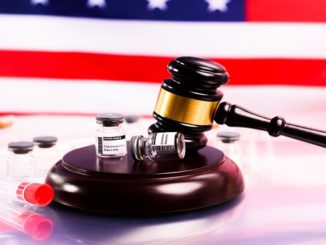
The outcome of the Sarah Palin civil suit against the New York Times could very well determine the future of the press. The trial is now in the hands of the jury. The nine New Yorkers sitting on the jury will resume deliberations today.
In 2017, Palin sued the New York Times and the former editorial page editor James Bennett over an editorial published in the paper that linked a map from Palin’s political action committee to a shooting in Arizona in 2011 that killed six and severely injured former Congresswoman Gabrielle Giffords.
New York Times reporter Jeremy Peters said that there are significant legal ramifications for the case. Peters said that there is a concerted effort by mostly conservative lawyers to rein in legal protections given to the press under the New York Times v Sullivan.
The precedent was set by the 1960s case New York Times Company v. Sullivan, which gives the press leeway to cover public figures, and protects the press from liability if honest mistakes are unintentionally published.
Peters continued that the First Amendment allows mistakes, and news organizations that make honest mistakes should not be litigated out of existence.
During her trial, Palin said it was disturbing to be linked to a shooting that killed a 9-year-old girl, and linked to it that she had a daughter who was 9 at the time. The New York Times argued that linking the map to the shooting was an honest error, and was immediately corrected.
CNN reporter Sonia Moghe has been covering the case from the courtroom, and said that it has been anxiety-inducing to be a journalist in the room watching the worst possible scenario unfold.
Palin has waged public battles in the past against the press, including Katie Couric, CNN, and the New York Times.




Be the first to comment